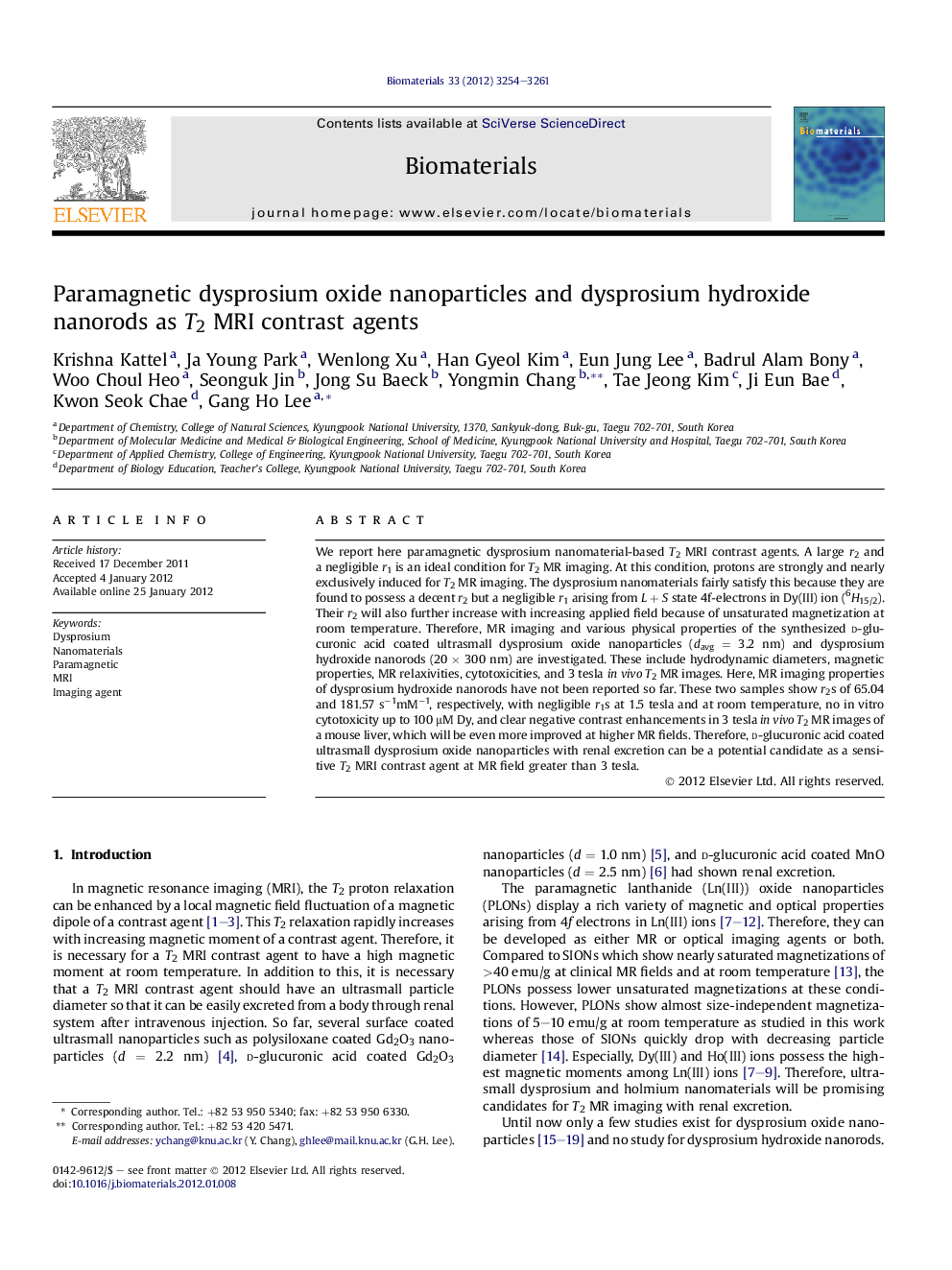| Article ID | Journal | Published Year | Pages | File Type |
|---|---|---|---|---|
| 6972 | Biomaterials | 2012 | 8 Pages |
We report here paramagnetic dysprosium nanomaterial-based T2 MRI contrast agents. A large r2 and a negligible r1 is an ideal condition for T2 MR imaging. At this condition, protons are strongly and nearly exclusively induced for T2 MR imaging. The dysprosium nanomaterials fairly satisfy this because they are found to possess a decent r2 but a negligible r1 arising from L + S state 4f-electrons in Dy(III) ion (6H15/2). Their r2 will also further increase with increasing applied field because of unsaturated magnetization at room temperature. Therefore, MR imaging and various physical properties of the synthesized d-glucuronic acid coated ultrasmall dysprosium oxide nanoparticles (davg = 3.2 nm) and dysprosium hydroxide nanorods (20 × 300 nm) are investigated. These include hydrodynamic diameters, magnetic properties, MR relaxivities, cytotoxicities, and 3 tesla in vivo T2 MR images. Here, MR imaging properties of dysprosium hydroxide nanorods have not been reported so far. These two samples show r2s of 65.04 and 181.57 s−1mM−1, respectively, with negligible r1s at 1.5 tesla and at room temperature, no in vitro cytotoxicity up to 100 μM Dy, and clear negative contrast enhancements in 3 tesla in vivo T2 MR images of a mouse liver, which will be even more improved at higher MR fields. Therefore, d-glucuronic acid coated ultrasmall dysprosium oxide nanoparticles with renal excretion can be a potential candidate as a sensitive T2 MRI contrast agent at MR field greater than 3 tesla.
